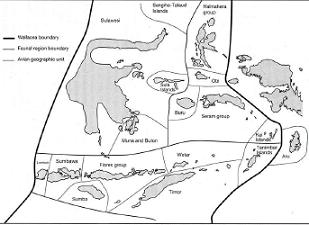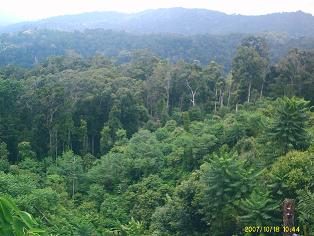
 |
|
|
|---|
| Although limited data on watershed sub-catchment areas and length of river systems is available, it is not particularly useful to assess the extent of water systems. This is because the smaller and more rugged islands tend to identify more and smaller tributaries as separate catchments. For example, Nusa Tenggara claims to have more river catchments than Sumatra and Kalimantan combined, and nearly as much total river length. Because of these issues of scale and definition, it is difficult to compare the extent of water systems in Nusa Tenggara and Maluku with the other islands. However, the concept of ‘critical lands’ and the national land rehabilitation program provide some insight into land and watershed management needs as defined by the GoI. |
 |
|---|
Nusa Tenggara and Bali have a combined land area of 7.3 million ha, which is the smallest in the country. This island chain has seven major river basins comprising 7.2 million ha of watershed area and over 18,000 km of river length. State forest land covers 3.2 million ha, about 44% of the archipelago's total land area. Of this "forest area," about 39% is in protection forests, designated to preserve watershed and ecosystem functions; 16% is in protected areas (parks and nature preserves); and 45% is in production forests under varying levels of exploitation, including conversion to other land uses. The island has over 1.7 million ha of "Critical Land" which represents 7% of Indonesia's total and 23% of the island's area. This is twice the national average for critical lands, indicating a high concentration of degradation in a relatively small area. Most (78%) of this critical land is outside the state forest area and the remaining 0.4 million hectares is state forest land. The national land and forest rehabilitation program will target only 100,000 ha in Bali and NTT, 7% of the area's critical land and 4% of the area affected by the program FWI/GFW 2002 (Director General for Water Resources, Department of Kimpraswil, 2002).
Maluku has a land area of 7.8 million ha, 4% of Indonesia's total. The island has three major river basins with 3,500 km of river length. State forest land dominates 90% of the island’s area, covering 7.0 million ha. Only about 53% is still good quality natural forest.
Another 45% is degraded forest and 2% is entirely deforested. Of this "forest area," about 26% is in protection forests, designated to preserve watershed and ecosystem functions; 6% is in protected areas (parks and nature preserves); and 68% is in production forests under varying levels of exploitation, including conversion to other land uses. The island has over 0.7 million ha of "critical land," which represents 3% of Indonesia's total and 9% of the island's area. Most of this critical land (74%) is outside the state forest area and the remaining 0.2 million ha is state forest land. The national land and forest rehabilitation program provides no data on program activities in Maluku (BPS Statistik Indonesia 2002; Ministry of Forestry 2002). |
|---|
Source : Report on Biodiversity and Tropical Forests in Indonesia, USAID/Indonesia, 2004. Prepared by : (1) Steve Rhee, M.E.Sc. (2) Darrell Kitchener, Ph.D. (3) Tim Brown, Ph.D. (4) Reed Merrill, M.Sc. (5) Russ Dilts, Ph.D. (6) Stacey Tighe, Ph.D. |
 |
 |
|---|
|
||||||||||||||||||||||||||||
|---|---|---|---|---|---|---|---|---|---|---|---|---|---|---|---|---|---|---|---|---|---|---|---|---|---|---|---|---|